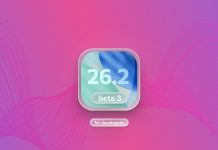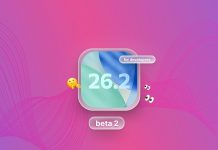About computers and music
There was a time when learning an instrument was a pretty straightforward venture: Pick it up, practice, sound horrible for a while and, if you keep at it, eventually improve. This reliable maxim took a side-trip as computers started playing a significant role in the creation and shaping of music over the last 40 years. Now, if one is willing to surrender some nuances of individual expression to let computers automate certain musical formulas (like timing and tuning), computers can turn the average joe into a Hipster Stravinski.
Interestingly, we seem to be okay with taking short-cuts to musical genius. Even Apple’s GarageBand (especially the iOS version) is loaded with “Here, let me make this easier for you” options that encourage novices to enjoy the thrill of making music. And not only is there nothing wrong with that, but it could potentially whet a talented person’s appetite for going further. In short: It’s a good thing.
Propellerhead’s Figure is designed with a sublime grasp on how to make music creation intuitive and simple while still producing euphonic and emotive results. It’s sole focus on techno sounds makes it better than GarageBand as a resource for beginners to get a taste of musicianship (so long as they like techno music). Alas, Figure does lack a few key features that GarageBand doesn’t and is therefore relegated to the C-list of iOS music doo-dads.
And that’s a shame.
What is Figure?
Figure is a $0.99 app that lets users employ simple and intuitive tools to create great-sounding music using Propellerhead’s Reason technology. With it, one can program a simple monophonic bassline, monophonic melody and four-part rhythm track, adjust filters and effects, mix them to get the sound “just so” and even edit sounds and patterns on the fly. There’s a cost for all that ease of use, however: One can only record two bars’ worth of music and it can’t be exported or saved in any way. What Propellerhead has unashamedly declared is that this is an app intended for banging out a bit of music when you have a few minutes to kill — and absolutely nothing else. We’ll get to that a little later.
Figure is all about making great (albeit short) techno songs through a simple GUI. Don’t worry if you have no musical training; Propellerhead’s main plan for Figure is obviously about ease of use as opposed to creating a workplace for demanding musicians. Instead of poking out melodies on a virtual keyboard, one merely slides one’s fingertip around on the touchscreen, shaping the pitch and tonality of a melody and bassline. Drums are programmed similarly: You can poke out a pattern with your fingertips or pre-set the number of beats per bar, hold your finger down, and let Figure work it out for you. Even with the drum sounds, one slides their fingertip around to get variation, i.e. open and closed hi-hat, different percussion, etc. Figure will worry about key signature and timing issues while you just listen and enjoy.
Once you’ve got a basic melody and rhythm, Figure lets you use that same finger-sliding UI to adjust filters, pitches, effects and levels to breathe more life into your creation. Time-based filter modulation (translation: the part that makes the synth bass go “eeeeeoooooowwwwwrrrrwwwwooooeeeee”) is a key element of the techno music style, and Figure makes it fun to mess with it. In fact, this is the most fun you’ll have messing around with music creation while, at the same time, not having to actually know anything about music.
It would be a crime not to give a nod to Figure’s distinctive and pleasing UI, which is, in fact, very much a Propellerhead UI. All of their products employ the muted colors and distinctively flat graphical style, reminiscent of something you might seen in a late-60s sci-fi movie. It’s not just about looks, however; Figure’s UI gives you easy-to-understand visual feedback for a surprisingly wide range of factors that are simultaneously at play. The simplicity of Figure’s UI may not scale well to a more complex music-creation app, but it sure scores a bullseye for this one.
How does it sound?
In a word: Amazing. There’s absolutely no doubt that Figure’s sounds are absolutely top-notch. For a techno affectionado, Figure delivers what they love to hear: Grimy, gritty, complex bass sounds woven into crisp, danceable drum grooves and peppered with melodies that range from stratospheric to downright belligerent. Given the slim selection of instrument choices (only three), Propellerhead has opened up an impressively wide array of options to vary and flavor the sonic signature of your music. Our favorite feature is the simple “pump” dial, which adjusts overall compression to create the sort of pounding beats that blast from the windows of Camaros all over the civilized world.
A pro musician might take issue with Figure’s musical limitations, but this context is one of those rare methods of musical composition in which thinking like a musician could work against you more than for you. Instead of saying “Why can’t I add an E#9 chord at the end of this riff?” or “Why can’t I play this in 5/4 time?”, one has to understand that Figure does what it does extremely well and does not attempt to be all things to all people (unlike GarageBand). It’s intended to give you a quick way to create good techno music, and it succeeds. This is not to say that trained musicians won’t enjoy using Figure; only that they may need to pull the stick out of their you-know-whats first.
Looks great, sounds great, easy-to-use. What else could you ask for from a music creation app? Alas, one very big thing…
“Save” is the difference between “toy” and “tool”
We really, really want to recommend Figure without reservation or qualifiers, but it’s not to be: There’s no way to over-state how odd it is that there’s absolutely no method through which to save what you create with Figure. No export feature, no “convert to MP3”, and every edit is destructive (meaning: once you change something, it stays changed). Granted, nobody’s going to write the next Giant Steps on this app, but we weep for the lost opportunities to bring a simple musical motif you create while waiting for the bus into more complex editors to flesh it out (especially considering how the synth sounds are just so damn good), or to even save it as an MP3 you can drop into your iPod. Hell, never mind exporting; is it too much to ask just to re-load something you created in Figure so you can hear it again? The omission of this one simple feature downgrades Figure from potentially being one of the coolest music-creation tools ever made for iOS to being just a toy. As a result, we know that serious musicians and suspect most non-musicians won’t find Figure’s long list of other cool features enough to keep their attention.
We’ll be dumbfounded if some sort of “save” feature doesn’t appear in a future update.
So close and yet so far
As already stated, Propellerhead offers Figure as no more than a pastime for when you’re taking the train home from work or waiting for a plane to board, but it’s almost a crying shame that an app which bursts at the seams with so much polish and quality is hamstrung by the lack of a save or export feature. The sounds are par excellence, the UI does what other apps like it fail to do (while looking good in the process) and the ease of use is exemplary. Alas, when you put your iPhone back in your pocket after your train arrives or your plane takes off, all your work vanishes as if it never existed. If not for that single shortcoming, Figure would be the must-have iOS music app of 2012. Instead, it’s just a well-made toy you’ll probably put aside after a few uses. But for $0.99, maybe that’s enough.






